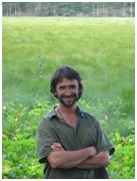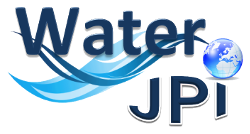|
CLEARANCE
CircuLar Economy Approach to River pollution by Agricultural Nutrients with use of Carbon-storing Ecosystems
|
|
Project Website
|
 |
Coordinator: Wiktor Kotowski
|
|
Projects Partner and Institution:
University of Warsaw (UW)
Warsaw University of Life Sciences (SGGW)
Green Management Group (GMG)
University of Greifswald (UG)
Leibniz-Institute of Freshwater Ecology and Inland Fisheries (IGB)
University of Aarhus (AU)
University of Nijmegen (UN)
|
|
Key words: wetland buffer zones (WBZ), agricultural nutrients, paludiculture, ecosystem services
|
|
Abstract: River ecosystems, along with riparian landscapes, are essential for maintaining and regulating natural cycles of water and nutrient flows between terrestrial and aquatic ecosystems. The key role is played in this respect by wetland buffer zones (WBZ) along rivers, which can be regarded as hubs of biodiversity and ecosystem services. Yet, due to the large-scale modification of European rivers and wetlands, and intensification of agricultural production, these functions are often seriously impaired.
CLEARANCE project aimed to analyze how different ecosystem functions of wetland buffer zones (nutrient capture and removal; climate adaption; biodiversity; recreation; resource provision) can be re-established, with a primary focus on water quality. In addition, it explored if and when these functions can and should be improved and how wetland buffer zones can be integrated in value chains via wet agriculture (and forestry). To this end, CLEARANCE combined hydrological modelling of biochemical processes in model catchments with cost-benefit analyses of restoration options, as well as the investigation of cognitive, institutional and network reasons that promote or hinder these circular economy options. Besides that, non-use functions of riparian landscapes were evaluated in a choice experiment carried out in three countries (Poland, Germany, Denmark).
The project allowed to quantify the effectiveness of wetland buffer zones (with a focus on those on organic soils) (published in a review paper). Further, using a multidisciplinary approach we were able to delineate potentially restorable WBZs in three model catchments (in Poland, Germany and Denmark) and carried out an extended cost-benefit analysis for one case catchment (lower Narew river, Poland) revealing high cost-effectiveness of WBZ re-establishment. To analyze how WBZ re-establishment can be combined with wet agriculture, potentially harvestable plants were screened for their nutrient uptake (depending on mowing time). In addition, a field study on the impact of mowing on nutrient retention carried out in a small Polish brook found that, while mowing can enhance nutrient removal by biomass expert, it also lowers the residence time of nutrients due to modification of plant biomass quality, whereas study in Danish (restored) and Polish (natural) WBZs allowed to quantify possible nutrient removal with hay in spontaneously established vegetation. The economical choice experiment involving totally c. 3000 participants in three Baltic Sea basin countries revealed an overwhelming support of people for restoration of riverine landscapes with a primary focus on improving water quality. A series of workshops allowed to identify main barriers and opportunities for the re-establishment of WBZs in the three countries, and develop recommendations for EU policy amendments. Outreach products of the project include a brochure in three languages, video on WBZs and on-line guideline document. Recommendations from the project will be applied in regional and national development programmes in PL, DK and DE and have been also presented to the European Commission.
|
|
Project structure: CLEARANCE is structured into three phases: (A) background knowledge & methods justification, (B) modelling in case catchments, (C) outreach and dissemination.
In phase A data from the nationwide Danish monitoring program and Danish databases on land use, soil type, precipitation data, hydrological measurements and transport of nutrients in rivers will be used to set up empirical models, which can predict the loss of N from the upland to the stream. These models will be coupled with specially-adapted hydrological models, in order to produce a tool that allows to identify nutrient pathways and quantify their loads on different types of WBZ. Based on the established and regularly updated database for different paludiculture plants, we will develop a database for WBZ management options with yields, nutrient contents and biomass quality parameters for specific use options. Recycling possibilities in production systems in WBZ will be analyzed through available data from own and external sampling. Willingness to pay (WTP) for different attributes associated with different river valleys management options (restoring WBZ, restoring meanders, the scope of paludiculture etc.) will be assessed in PL, DE and DK. Discourse analysis from environmental ethics will be used to first provide a comprehensive account of “water valuation” and related intrinsic, instrumental and relational values in the case of wetland-buffer zone with paludiculture as a proposed socio-ecological innovation and putative contribution to healthy rivers. The analysis will also identify and value conflicts, including these caused by the monetization and commodification of ecosystem services.
In phase B, knowledge gathered and tools developed in phase A will be implemented in model catchments in Danmark, Germany and Poland. For each catchment, GIS-based models including climate, hydrology, land cover, river valley vegetation, hydrological data will be elaborated and N & P sources and pathways will be identified. Ecosystem services values in case catchments will be quantified for different kinds of WBZ development. Summing all the results up, we will quantify costs and benefits of WBZ for all case catchments, under different scenarios and in respect of market and non-market values.
Within phase C scientific publications and practical guidelines and recommendations will be prepared.
|
|
Implementation:
CLEARANCE consists of seven thematic workpackages (WP).
WP1 - Upland sources recharging WBZ is aimed to build a tool and framework for identification of spatially explicit nutrient input hotspots toward existing and projected WBZ.
WP2 - Wetlands as buffers is aimed to establish methods of quantifying nutrient capture in WBZ and apply them to case catchments. The calculated nitrogen and phosphorus load on the riparian areas will be used to estimate how maintenance, creation or restoration of the riparian WBZ impacts stream transport of nutrients.
WP3 - Closing the loop: biomass use, nutrient removal & commodification of nutrient recycling is aimed to analyze options of combining nutrient removal including nutrient recycling (ashes, substrates) potential and biomass utilization. WP3 compiles land management options that combine nutrient removal including nutrient recycling potential and biomass utilization.
WP4 - Water cycles and hydrological boundary conditions is aimed to localize and delimit WBZ, quantify available water in case catchments; assess hydrological co-benefits. WP4 is oriented at quantification of hydrological processes allowing WBZ to act as nutrient sources and sinks in the catchment scale.
WP5 - Co-benefits: evaluation of ecosystem services is aimed to estimate cultural services and pure non-use values related to different WBZ scenarios . In the context of cultural services our work will focus on estimating recreational, aesthetics values related to WBZ. Since WBZ are also likely to have a very large impact on biodiversity conservation we will also assess existence value related to biodiversity.
WP6 - Policy and civil society: barriers and opportunities is aimed to identify policy and social constrains and opportunities of implementing WBZ. Extended social grid analysis focused on societal dynamics around innovations for the common good, e.g. here the proposed creation of wetland buffer zones with paludiculture. Regional workshops will communicate preliminary results and serve as a critical feedback from regional stakeholders for final recommendations.
WP7 - Integration & upscaling is aimed to integrate information on different ecosystem services and benefits from WBZ and synthesize in form of costs and benefits analysis on the catchment scale.
|
|
Outcome/deliverables: CLEARANCE aims to deliver diversified outputs addressed to four different target groups:
- Scientific community - papers submitted to open-access international journals (possible replacement of individual submissions with a collaborative scientific book) and a scientific session on multifunctional WBZ offered at an international conference, along with conference papers at other scientific symposia,
- Stakeholders connected to WBZ (water authorities, experts, farmers, anglers, etc.) - three national stakeholder workshops, practical guidelines on multifunctional WBZ in circular economy, brochure and video materials with examples of WBZ at work,
- Decision makers at EU level - recommendation document on for innovation in Common Agricultural Policy and Water Framework Directive employing WBZ concept as parts of circular economies in agricultural catchments.
|
|
References coordinator and leaders of each WP:
WP1 – Dominik Zak (IGB)
WP2 – Carlos C. Hoffmann (AU)
WP3 – Wendelin Wichtmann (UG)
WP4 – Mateusz Grygoruk (SGGW)
WP5 – Marek Giergiczny (UW)
WP6 – Rafael Ziegler (UG)
WP7 – Wiktor Kotowski (UW)
|
|
Main outputs:
- Walton C.R., Zak D., Audet J., Petersen R.J., Lange J., Oehmke C., Wichtmann W., Kreyling J., Grygoruk M., Jabłońska E., Kotowski W., Wiśniewska M.M., Ziegler R., Hoffmann C.C. 2020. Wetland buffer zones for nitrogen and phosphorus retention: Impacts of soil type, hydrology and vegetation. Science of the Total Environment 727, 138709. https://doi.org/10.1016/j.scitotenv.2020.138709 (non-open access)
- Jabłońska E., Winkowska M., Wiśniewska M., Geurts J., Zak D., Kotowski W. 2020. Impact of vegetation harvesting on nutrient removal and plant biomass quality in wetland buffer zones. Hydrobiologia, published: 28 April 2020. / Jabłońska E., Wiśniewska M., Marcinkowski P., Grygoruk M., Walton C.R., Zak D., Hoffmann C.C., Larsen S.E., Trepel M., Kotowski W. 2020. Catchment-Scale Analysis Reveals High Cost-Effectiveness of Wetland Buffer Zones as a Remedy to Non-Point Nutrient Pollution in North-Eastern Poland. Water 12, 629.
- Ziegler R. 2019. Viewpoint – Water innovation for a circular economy: The contribution of grassroots actors. Water Alternatives 12(2): 774-787.
- Ziegler R. 2020. Paludiculture as a critical sustainability innovation mission. Research Policy 49, 103979.
More results on the project: Data and resources
|
|
Contact Point for Communication/Dissemination activities: Marta Wisniewska
|
|
Contact Point for Open Data/Open Access activities: Marta Wisniewska
|

